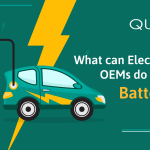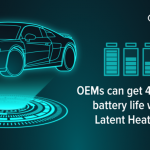Safety challenges that manufacturers face with electric vehicle batteries
While Electric Vehicles (EVs) are making inroads around the world, there is still some skepticism about the lithium-ion batteries inside them. One issue with EVs is their vulnerability when it comes to fires because of the batteries. In an EV car crash, it is possible for things to get violently explosive real quick, and then it hardly matters what kind of EV model you are driving. Most EVs have huge battery packs that can cause serious fires if they get punctured or damaged.
The issue with a lithium-ion battery fire is that there is typically a short circuit within one or more of the battery’s cells, which generates heat. The heat can then ignite the chemicals within the battery. That can cause problems in the adjoining cells and lead to the condition known as ‘thermal runaway’ in which the fire spreads and builds.
In fact, with an EV, the car can also burst into flames hours after the initial blaze. There could also be a situation where the car can unexpectedly continue to catch fire because the battery pack itself hasn’t fully drained yet. Although, EVs have a number of safety mechanisms such as circuit breakers that initiate when collision detectors are triggered and coolants circulated to keep temperatures down, if one or a number of mechanisms fail, the fire can spread rapidly.
Battery Management System
One way of avoiding mishaps to some extent is the concept of Battery Management system (BMS) which is always stressed upon in EVs. Since there are a lot of cells put together to form a battery pack in EV and every cell should be individually monitored for its safety and efficient operation, the special dedicated system called BMS is useful. An advanced BMS should monitor each cell’s voltage and temperature, thus ensuring safe and reliable operation and balanced batteries. Through BMS, maximum efficiency from the battery pack can be ensured while completely charging and discharging all the cells at the same time at the same voltage. Apart from this, the BMS is responsible for many other important functions to protect the battery from damage.
Another method known as Passive thermal management is also efficient in protecting batteries. In Passive thermal management, a cooling technology absorbs heat solely via thermodynamics like convection, conduction, and radiation. Passive cooling techniques are typically less complex and less expensive than active cooling approaches and are more suited for many smaller and mid-sized battery packs. One common approach to passive thermal management in lithium-ion battery packs is to apply a heat sink. Another effective passive thermal management technique is to employ phase change material (PCM) in the battery pack design. PCMs absorb heat while changing from a solid to a liquid state, once their phase transition temperature is reached.
Another effective and useful solution in the market is the use of Latent Heat Systems (LHS) materials. Latent Heat Systems materials have proved to be useful in reducing hazardous thermal effects since they absorb and store thermal energy. LHS thermal management materials provide energy absorption and heat dissipation characteristics for passive thermal control. These materials are designed to prevent thermal runaway, maintain homogenous temperatures across cells and reduce battery overheating due to fast charging/ discharging which leads to less battery degradation and increased battery life. Companies like Latent Heat Solutions LLC are experts in passive thermal control and offer solid protection for Lithium-Ion battery systems.
Besides these methods, there is continuous research in the market for developing a range of thermal management protection materials and methods over the years. The idea is to provide more time for occupants to exit a vehicle and dissipate heat to cut the chances of a thermal runaway spreading uncontrollably. While there is no “one-size-fits-all” approach, companies are putting their best foot forward to create safer batteries for EVs.




